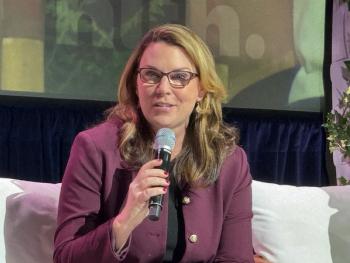
Hospitals hope for help from $50B rural health program
States have submitted their applications for the federal government’s new Rural Health Transformation Program. Hospitals now will wait to see what they get.
The applications have been submitted, and for hospitals, the waiting game begins.
President Trump and Congress created the new
The program offers $50 billion to states for rural health programs over five years, and states had little time to apply. States had to apply by Nov. 5, and the Department of Health & Human Services said the decisions will be made by the end of the year.
Hospitals and health systems across the country worked with their state health and human service departments on the applications. Chief Healthcare Executive® reached out to state hospital associations to gauge their thoughts on the pitches for the grant programs.
Hospital associations are anxious to see how much aid will actually go to rural hospitals, which are extremely vulnerable.
While the rural health program initially may have been touted as a remedy to help preserve rural hospitals, federal officials have also talked about using money to focus on prevention and boosting technology. Hospital leaders say they are worthy goals, but they worry that rural hospitals may not be getting the lifeline that some had hoped.
“I think the challenge is, the financial stressors on rural hospitals is not complicated,” Mayhew says. “They have high fixed costs related to maintaining a workforce, the cost of pharmaceuticals, the cost of medical supplies, lower volumes and significant under reimbursement by Medicare and Medicaid.”
“Much of what CMS is incentivizing, which is important in terms of improving health care outcomes, is really targeting community-based services, primary care services, which we support and agree with. But that doesn't necessarily tie back to addressing the financial stressors of rural hospitals,” she says.
(See an explainer on the federal program in this video. The story continues below.)
Aiming to work together
Federal officials have made clear that the funds aren’t necessarily a lifeline to rural hospitals. Dr. Mehmet Oz, administrator of the Centers for Medicare & Medicaid Services,
“We're not talking about paying bills, and, you know, rounding the edges,” Oz said. “We want transformative big ideas that will dramatically change our expectations of the rural health care system.”
The $50 billion program has two primary components. Half of the money will be distributed equally among all states that have approved applications. The other $25 billion will be awarded on a competitive basis, with states vying for grants.
In announcing the program, CMS said money would be awarded to “applications that reflect the greatest potential for and scale of impact on the health of rural communities.”
In a joint
Cindy Samuelson, senior vice president of public relations for the Kansas Hospital Association, tells Chief Healthcare Executive that the group worked closely with state officials on Kansas’ application for aid in the program. She pointed out that the program is not dubbed the “Rural Hospital Transformation Program,” and elements of the state’s application are aimed at boosting various healthcare providers in Kansas.
“We really do have a state that is very interdependent on all those providing health care,” Samuelson says.
“It should have things that impact not just hospitals,” she says. “Is it disappointing that not all the money is for hospitals? I'm sure some hospitals would say that was the original intent, but I think in the nutshell, our goal is optimal health for Kansans and so, by all of us working together, we can hopefully do that.”
- Read more:
Strategies for the $50B rural health fund
‘The point of entry’
Julian Walker, vice president of communications for the Virginia Hospital & Healthcare Association, tells Chief Healthcare Executive that the organization worked with state officials and offered suggestions for the state’s application for the program.
Hospitals understand that it’s a competitive process to secure, but they are also hoping to get some support in the program, Walker says.
“We would hope that our counterparts in the federal government and CMS have an appreciation for the vital and essential role that hospitals play again as economic cornerstones, as major employers and as providers of essential health services. In many communities, hospitals are the backbone of the community health infrastructure and the point of entry to the system for people who might not otherwise have access to care, even when people seek emergency department care,” Walker says.
“We are in regular communication, both with our state partners and with federal partners as well, to impress upon them the vital role that hospitals play. And so we would hope that our federal partners are mindful of that important role, and that funding that is allocated is appropriately representative of that,” he adds.
Some of Virginia’s rural hospitals have been dealing with financial difficulties for years. About one-third of the state’s rural hospitals are losing money, according to the Virginia association.
Hospital leaders noted a key element of the new federal program: It’s a five-year program, so it has a finite ending. So health system executives have said they are concerned about the sustainability of new programs and initiatives.
“We can waste a lot of money very quickly, unless we're really thoughtful about investing it in programs that actually are not only sustainable, but going to get us to a different place,” Conroy said.
“We need to focus on how to leverage those dollars to do something that is a one-time cost,” Gassen said.
Won’t offset losses
Hospital leaders and associations say they’re grateful for the influx of aid targeted at rural health programs. But they also stress that even if hospitals get the bulk of the $50 billion in the new rural health program, that won’t match the losses they are projecting with Medicaid cuts in the coming years.
With new caps on taxes to finance Medicaid programs and health systems expecting to provide more care to people without insurance, hospitals are looking at significant financial losses.
KFF, which examines health policy, estimates that
Virginia’s hospitals are looking at significant losses in Medicaid support, Walker says.
“Our estimates are that that is going to cost Virginia hospitals in excess of $2 billion a year,” Walker said. “So there are significant implications.”
Unlike some states, Kansas didn’t expand its Medicaid program several years ago, so the state shouldn’t take an immediate hit, and could fare a bit better with support from the rural health fund in the next couple of years, Samuelson said.
But in 2028, Kansas hospitals will begin to see the impact of changes in Medicaid, and funding from the rural health program will only do so much, she said.
“It's not filling up what we're going to be losing,” Samuelson said. “But we have a little bit of a window here where hopefully some of our hospitals in our state that are really struggling, we'll have a little bit of an opportunity to plan for the future before those hits really hit them hard.”



































